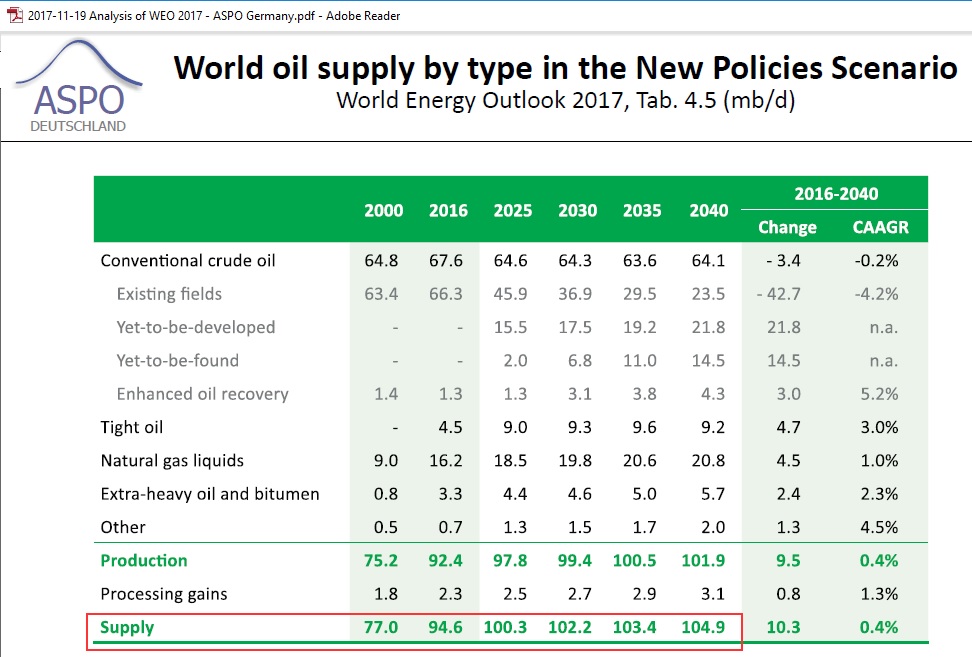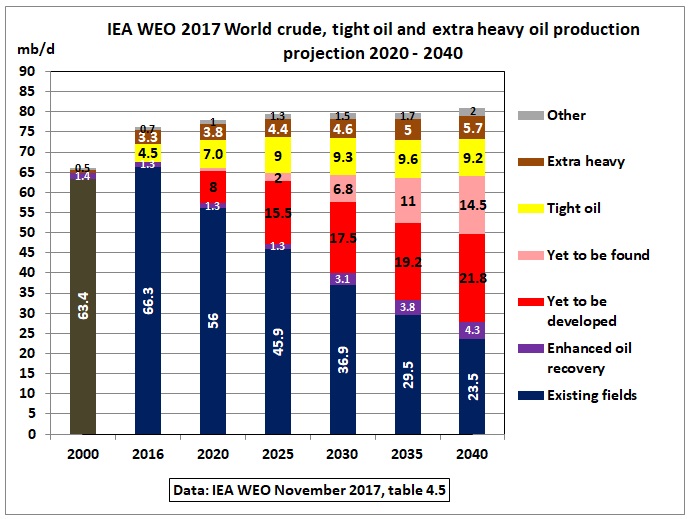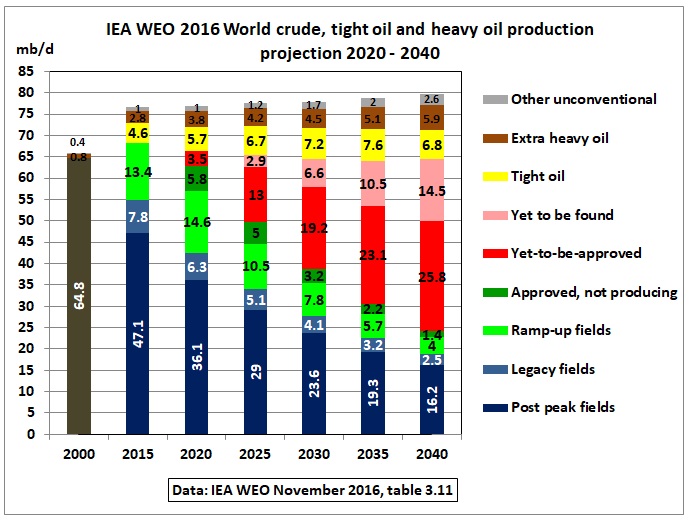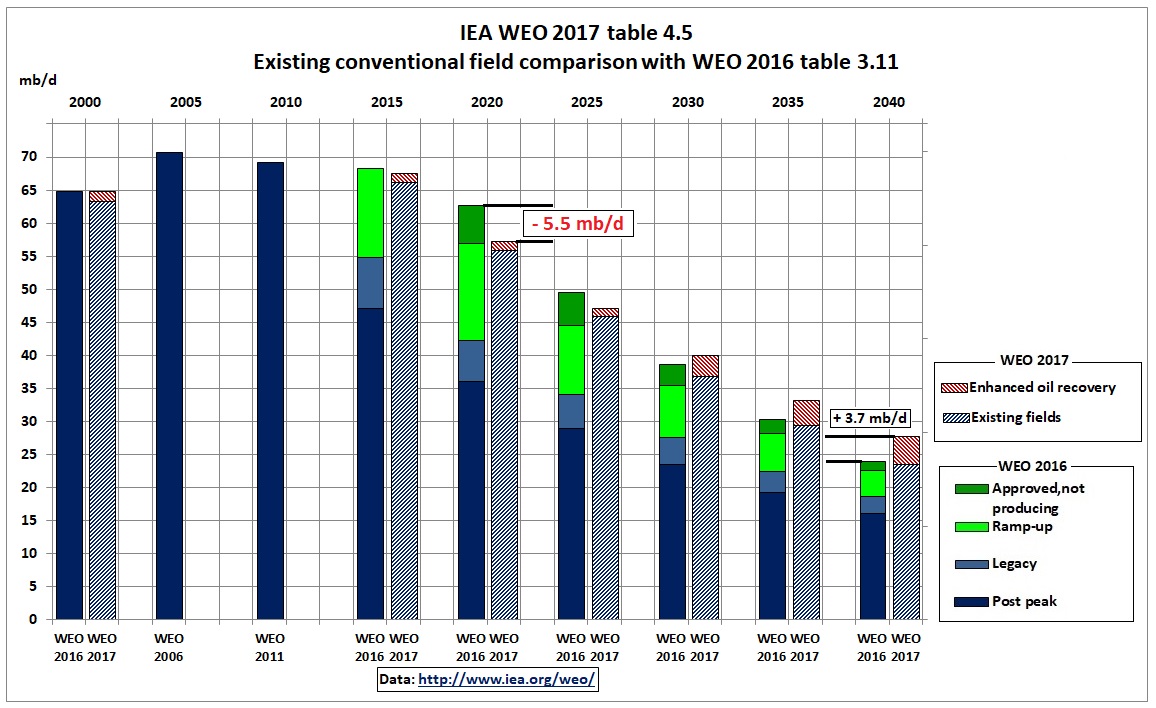Does the IEA try to hide the conventional crude oil peak in its 2017 World Energy Outlook?
In this post we look at crude oil production in the World Energy Outlook released in November 2017

Fig 1: WEO 2017 oil supply
Note that the 5 year interval table omits 2005 and 2010. Is this to conceal the 2005 conventional peak (see Fig 6)? The immediately important year 2020 also isn’t there.
Let’s put the crude oil related data of the above table 4.5 into a graph, thereby interpolating between 2016 and 2025 for 2020.

Fig 2: WEO 2017 crude oil
Production from existing conventional fields declines by around 4% pa to just 23.5 mb/d in 2040. Enhanced oil discovery, fields yet-to-be-approved and yet-to-be found are calculated in such a way that total conventional production does not decline much. The important message here is that it won’t grow. Only unconventional oil is assumed to bring growth in production.
Traditionally, the IEA calculated the “call on OPEC” as a balancing item between demand and Non-OPEC production. Maybe that call is no longer heard.
In Fig 2, the underlying methodology is more complex:
- Show perpetual production growth to match assumed demand growth
- Determine decline in existing fields
- Add enhanced oil recovery
- Add yet-to-be developed
- Add yet-to-be found so that conventional production declines only marginally or looks rather flat
- Stack on top growing tight oil and heavy oil to show overall growth
Let’s compare WEO 2017 with WEO 2016

Fig 3: Crude production forecast in the WEO 2016
We can see that the WEO 2016 was more detailed on existing fields. It showed post peak oil fields (70%), legacy fields (10 %) and ramp-up fields (20 %).

Fig 4: Comparison existing fields WEO 2017 -2016
In the above stacked clustered graph we see that “existing fields” in the WEO 2017 are lower and therefore decline is higher (up to 2025) than the 4 categories of the WEO 2016 report: post peak, legacy, ramp-up and approved-not producing plus enhanced oil recovery (EOR).
…click on the above link to read the rest of the article…